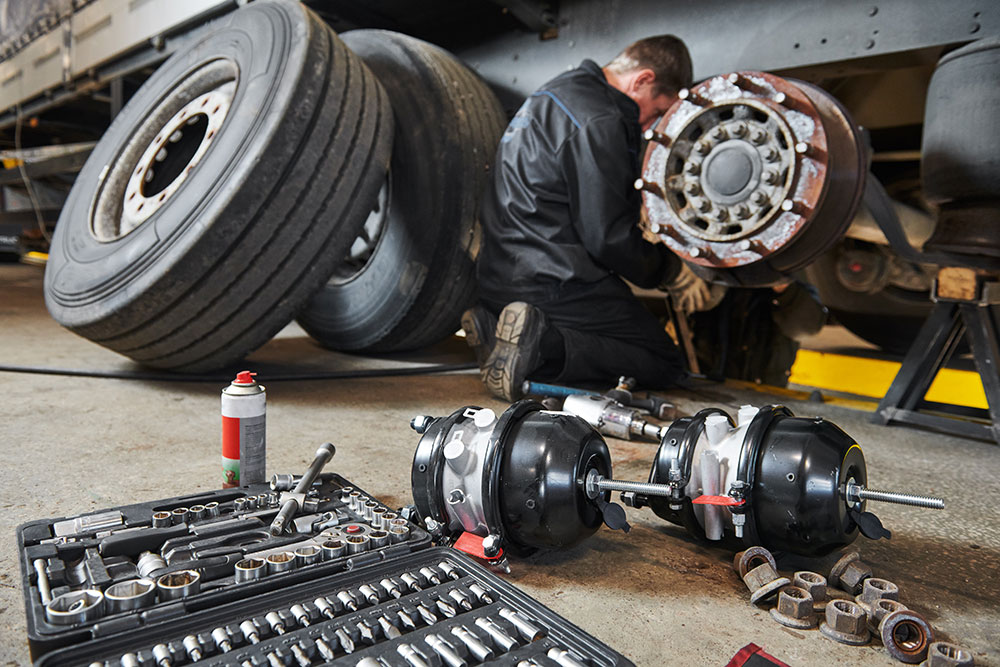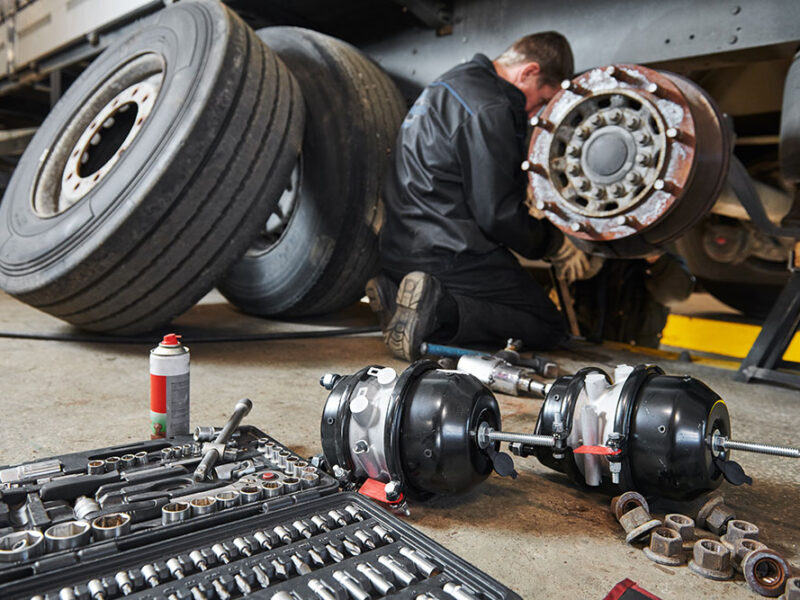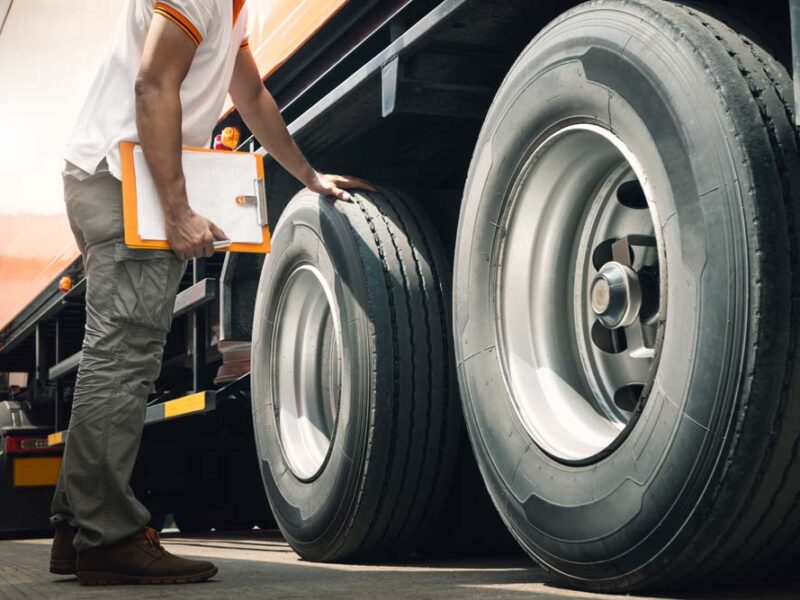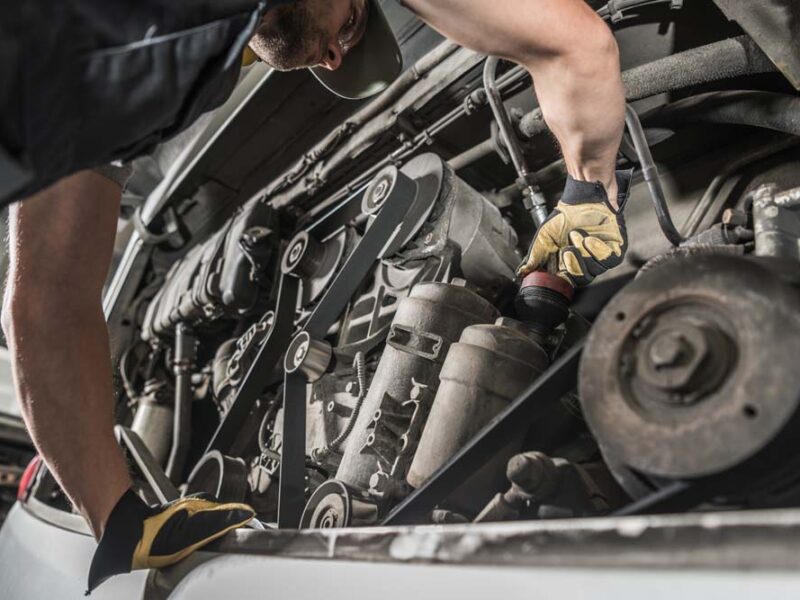Revisiting the DVSA's Guide to Maintaining Roadworthiness
In April 2025 the Driver & Vehicle Standards Agency (‘DVSA’) issued the latest edition of its Guide to Maintaining Roadworthiness (‘GTMR’).
‘Hot off the press’ in early June detailed judgments of Ms. Sarah Bell (Traffic Commissioner for the London and South East of England Traffic Area) in the related cases of Dancon Services Limited (OK1117843) and Dancon Haulage Limited (OK2018188) were published. In both decisions Ms. Bell repeats a view long expressed by traffic commissioners which would be a welcome addition to the introduction of the next GTMR update.
“There is an inaccurate belief in some parts of the industry that the Guide to Maintaining Roadworthiness (GTMR) is ‘mere’ guidance and can be dispensed with if the Operator chooses any different approach. The GTMR contains a mixture of legislative requirements and best practice (alongside setting out what is the ‘bare minimum’). Whilst not statutory guidance, GTMR is a collaboration between DVSA, TCs, trade associations and other industry experts. Compliance with GTMR for the operational fleet mix in question, whilst not having statutory authority, is strong evidence of appropriate and safe systems. If GTMR is put to one side then, subject to the legal provisions, the substitute must be equally robust in ensuring roadworthiness.”
What is obvious, but nevertheless highly significant, is that by the time an operator (and for the holders of standard licences, the operator’s transport manager(s)) has chosen not to follow GTMR guidance and has been found wanting by the DVSA in relation to aspects of its maintenance regime, the prospects of demonstrating that such compliance systems as are in place are ‘equally robust’ are vanishingly small.
In reality, relatively few public inquiries are defended by operators on the basis that having carefully analysed the GTMR a reasoned and logical decision (with appropriate records having been made at the relevant time) was taken to justify departing from the approach recommended in the GTMR. Far more commonly one sees operators who are not familiar with the content of the GTMR and / or do not keep abreast of developments in the guidance, and so fall short of the DVSA’s expectations if and when they are subject to investigation.
For those familiar with the content of previous editions of the GTMR, a useful starting point when considering the April 2025 edition is the table on page 3 which is reproduced below:
- Section 1.1 Maintaining Compliance - update from Traffic Commissioners - page 10 of guide.
- Section 3.0 Daily walk around checks - additional checks for vehicles used in arduous conditions - page 21 of guide.
- Section 5.0 Maintenance Provision Rating Scheme (MPRS) - Update on scheme objective - page 45 of guide.
- Section 5.3 Braking Performance Assessment - Clarification on requirements - page 48 of guide.
- Section 5.4 EPMS Parking Brake Assessment - Additional clarification and guidance added - page 55 of guide.
Maintaining Compliance
This section has been expanded to underline the importance of ensuring that an operator’s maintenance arrangements are fit for purpose. The new sections of text include the following:
For HGV - For goods operators, Section 13C (4) of the Goods Vehicles (Licensing of Operators) Act 1995 requires that:
There must be satisfactory facilities and arrangements for maintaining the vehicles used under the licence in a fit and serviceable condition.
And for PSV - For passenger operators, Section 14ZC (1) of the Public Passenger Vehicles Act 1981 says similarly:
(1) The requirement of this section is that the traffic commissioner is satisfied:
(a) that there will be adequate facilities or arrangements for maintaining in a fit and serviceable condition the vehicles proposed to be used under the licence; and
(b) that there will be adequate arrangements for securing compliance with the requirements of the law relating to the driving and operation of those vehicles.
And then more generally, and applicable to both HGV and PSV operators:
Traffic Commissioners rely on this Guide as the starting point for whether or not arrangements are “satisfactory” and “suitable”. Operators should be aware that “fit and serviceable” may at times go beyond the basic MOT annual test standard. A good example of this is with brake performance where a vehicle may pass an MOT annual test with minor or advisory defects in the braking system provided the minimum performance requirements are met. To meet the requirements of the operator’s licence, vehicles must satisfy Regulation 18 (1) of the Road Vehicles (Construction and Use) Requirements [sic] 1986 which states that:
Every part of every braking system and of the means of operation thereof fitted to a vehicle shall be maintained in good and efficient working order and be properly adjusted.
The reference to ‘Requirements’ should read ‘Regulations’ and this same section of the Regulations was referred to by Ms. Bell in the part of her decision in both Dancon cases in relation to brakes that continues immediately following the quoted part of her decision above, as follows:
By way of example Regulation 18(1) of the Construction and Use Regulations 1986 requires that “Every part of every braking system and the means of operation thereof fitted to a vehicle shall be maintained in good and efficient working order and properly adjusted”. This legal requirement underpins what then follows in GTMR about measured brake performance testing at each PMI. As per the Upper Tribunal in 2022/1227 Lineage UK Transport Limited “...brake testing procedures are of particular importance from the point of view of road safety”. The importance of GTMR in assisting the industry was recognised in 2014/058 Angus Smales t/a Angus Smales Eventing and Lineage confirms it remains as relevant as ever. Ms Lyons disdain for GTMR evidenced by her response to the VE on 29/11/22 (paragraph 5 above) is strong evidence toward explaining the chaotic position the Operator is in.
Daily walkaround checks – arduous conditions
The text that has been added to the latest edition of the GTMR is as follows:
Vehicles engaged in arduous/or off-road operations may require multiple checks during the 24 hour period. Attention should be focused on vehicle systems and components which may be subject to damage or wear before returning to the road.
For many years Pellys Transport & Regulatory Law has advised operators in relation to the recorded systems that should be in place when vehicles (usually HGVs) must travel off-road: typically waste, construction and demolition work. As many readers will be aware one of the complicating factors is that site rules often prohibit or obstruct properly recorded off-road walkaround checks from being conducted, so the solutions to these issues will often require more than simply instructing drivers to check their lorries before rejoining the public highway and then leaving them to it.
The DVSA and commercial vehicle unit police routinely target vehicles that are engaged in off-road work for roadside encounters; operators and their drivers can feel unfairly targeted in relation to defects which they see as being outside their control, while enforcement officers tasked with policing road safety point to the immediate prohibitable defects that they find as evidence that their checks are necessary.
Maintenance Provision Rating Scheme
In the October 2024 edition of the GTMR readers were alerted to the DVSA’s trialling of a new maintenance provision rating scheme (‘MPRS’). The April 2025 edition now includes the following section:
The Maintenance Provision Rating Scheme (MPRS) is an independent recognition system. It was designed by and for the industry, with support from industry bodies, DVSA, and the Office of the Traffic Commissioners.
Aimed at workshops and maintenance facilities of all sizes, MPRS is a single rating scheme that gauges performance of current facilities and workforce quality through comprehensive audits and collective evidence.
MPRS puts the spotlight on improving current standards across workshops and maintenance facilities across the nation, highlighting non-compliant and unsafe practices that compromise safety and standards within the commercial industry.
Endorsed by the sector, an MPRS rating reflects the competency of a workshop’s facilities and technical expertise. The higher the rating, the greater the confidence operators should have in the competences.
For operators who rely on third party maintenance providers to undertake the required regular safety inspections and preparation for annual test it is advisable (and in time it will effectively become necessary) to engage with each maintenance provider in order to determine the level capability and competency on offer. At public inquiry operators frequently face criticism from the DVSA and traffic commissioners for vehicles found not to be roadworthy and / or paperwork that is incomplete / insufficient. It is not (and never has been) a complete answer just to blame the maintenance provider. For operators who carry out their maintenance in-house, regard should still be had to the quality of their own facilities so as to demonstrate the capability to provide work to the required standard. The direction of travel in this area appears very likely to be one in which DVSA vehicle examiners will be assessing and reporting on the quality of maintenance against an MPRS standard.
Braking performance assessment
The October 2024 GTMR included a section on braking performance assessment requirements from April 2025, and these requirements are now confirmed in the April 2025 edition. The section begins -
To follow best practice and comply with legislation there is an expectation that every safety inspection will include a brake performance assessment using either a roller brake test (RBT), a suitable electronic brake performance monitoring system (EBPMS) or a decelerometer with temperature readings.
Operators must satisfy themselves that the methods used to assess brake performance are sufficient to meet the requirements of Regulation 18 of The Road Vehicle (Construction and Use) Regulations 1986.
Conducting a laden brake test using a calibrated roller brake tester is the most effective method of measuring individual and overall braking performances. A plate brake testing device may also be suitable depending upon the design of the equipment.
Vehicles can be presented for roller brake testing up to 14-days before the safety inspection date; this allows the operator the flexibility to conduct a laden brake test during normal operational activities without the need to specially load it. In these circumstances the RBT report needs to be provided to the person conducting the safety inspection. A copy of the RBT report generated must be retained on the vehicle's maintenance file.
If using EBPMS to monitor brake performance, there must be an evaluation of the performance report before every safety inspection by a competent person who can interpret the data. The evaluation must be signed, dated, and attached to the vehicle record together with the performance data report. The evaluation and data report may be a single document.
Unsurprisingly, the section on brakes in the GTMR is a ‘must read’ for all operators and transport managers. Knowing what is ‘required’ (i.e. what must be achieved either by following the guidance in the GTMR or as part of a different regime if for some reason the decision to depart from the guidance is taken) is fundamental and this includes operators making sure that not only do they obtain properly documented brake test results, but that they know how to analyse the reports in order to determine what they actually mean. As many operators will know, the fact that a brake test report includes the wording ‘overall result passed’ is not the end of the story, for example if the report shows an insufficient axle load, or significant brake axle imbalances, then further action will be required.
EBPMS parking brake assessment
The final item included in the DVSA’s ‘Change Table’ relates to electronic brake performance monitoring system (‘EBPMS’).
The coverage of this topic in the October 2024 GTMR was detailed and the updates are relatively modest – in particular, for the in-service braking performance defects section, the point is made that it is a meaningful laden RBT that is required before a vehicle or trailer is returned to service –
In-service braking performance defects
The system must be capable of alerting the operator to under-performing service brakes, where the system does not alert the driver, the operator must [this part of the DVSA guidance is missing, but presumably operators will be required to ensure that they have in place a system to identify and respond to under-performing brakes]. Any such alerts should be recorded and investigated in the same manner as required using the walkaround reporting system. After any repair or maintenance of the brakes a meaningful laden RBT should be carried out before return to service.
Takeaways
Marrying effective compliance with a commercially viable and efficiently run operation is no easy task, and if a business is not commercially viable it will fail with such failures capable of causing financial disaster and the loss of everything created and fought for sometimes over decades.
The purpose of successive editions of the GTMR is to help operators and to make available the latest developments in a format that is relatively easy to digest. It is trite to say that all operators should read it (of course they should) but if time is short, focusing on the updates as they arise, and at least scrolling through the entire guide to get a sense of what is included (a task that would take no more than 5-10 minutes) is a useful way of staying on top of new developments as they arise.
As always if you have any questions or need any advice, then call us on 01279 818280 or click here to send us an email. We are here to help.
© Richard Pelly, June 2025
Article first published in Essential Fleet Group Magazine - June 2025

Latest Coach & Bus Industry News and Insight

Revisiting the DVSA’s Guide to Maintaining Roadworthiness
In April 2025 the Driver & Vehicle Standards Agency (DVSA) issued the latest edition of its Guide to Maintaining Roadworthiness.

The Wheels on the Bus go Round & Round….but how do they Stop?
At the tail end of 2024 a Public Inquiry was held in front of Traffic Commissioner Kevin Rooney where the subject of brake maintenance practices was called into question…

Maintenance Provision Rating Scheme for Commercial Vehicle Workshops is Launched
One of the key tenants of running a commercial vehicle operation, whether ‘HGV’ or ‘PSV’ is that the maintenance of the vehicles is paramount. For some operators this will mean having their own maintenance facilities and teams to look after their fleet of vehicles in house, but the majority of operators in the UK are reliant on 3rd Party maintenance providers…

New Rules for Vehicle Operators and Drivers Carrying Out International Journeys
The Department for Transport and the Driver and Vehicle Standards Agency recently issued a bulletin regarding the new rules that vehicle operators and their drivers will have to comply with if travelling on international journeys…

Road Haulage Association Members and DVSA Leadership Work Shadow Each Other!
To help highlight the Road Haulage Association’s “National Lorry Week” which this year was between 4th and 8th November 2024, the Road Haulage Association and the DVSA’s Leadership team decided to spend some time work shadowing each other….

2024 Update to Guide to Maintaining Roadworthiness (GTMR)
The Guide to Maintaining Roadworthiness is the Driver & Vehicle Standard Agency’s (DVSA) standard produced in collaboration with key industry stake holders which explains the responsibilities and systems involved in maintaining vehicles in a roadworthy….

New Driver CPC Reforms to be in Force from 3rd December 2024
Following a very lengthy consultation period on this matter launched in early 2023, Parliament finally debated the “Vehicle Drivers (Certificates of Professional Competence) (Amendment) Regulations 2024” on Tuesday 29th October 2024…

When Sat Nav’s Lead Lorries Astray!
Lorries getting into trouble and causing chaos in the small country roads of Great Britain have been making headlines again. Whilst a lot of this content is amusing and no doubt is a winner with internet audiences there is a very serious side to these incidents…

Traffic Commissioners 2023-2024 Report – the Highlights & the Lowlights of the Year
In early October the Traffic Commissioners of Great Britain published their annual report. The report encompasses the purpose of the individual Traffic Commissioners who are independent regulators for the goods vehicle and public service vehicle industries and their professional drivers…

Vehicle Maintenance Data Collected by the DVSA
In a recent ‘blog’ by the DVSA’s Danny Charles the amount and type of data that the DVSA collects was discussed. Some may find it surprising how much data the DVSA holds and makes available to the general public on individual transport businesses…

Murky Mini-Bus Waters in UK?
There has been reports in the industry news concerning the number of illegal operators of mini bus services who are operating un-hindered by the regulatory enforcement agencies…

Driver CPC – Changes Coming in 2024 and 2025
The Driver Certificate of Professional Competence (DCPC) was introduced in the UK in 2007, as specified in EU Directive 2003/59/EC for all commercial drivers…
